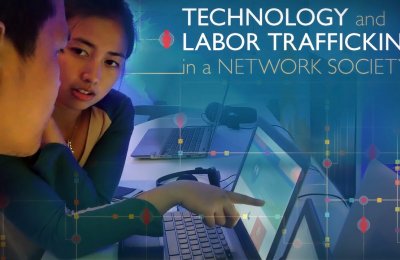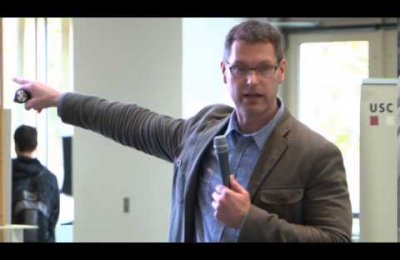The rapid expansion of the Internet is being used to facilitate human trafficking, yet it also can be harnessed to monitor and combat this form of modern-day slavery. This is the finding of a new report from the Center on Communication Leadership & Policy (CCLP) at USC Annenberg.
The result of a year-long investigation by CCLP research director Mark Latonero, Ph.D., and his team, Human Trafficking Online: The Role of Social Networking Sites and Online Classifieds focuses on how technology and online tools can be used to prevent trafficking, protect victims and prosecute perpetrators.
"Data mining, mapping and advanced analytics can be developed to support law enforcement and other organizations in fighting human trafficking," says Latonero. “The report also describes how mobile phone applications, crowdsourcing and other new technologies might be used to help victims.” Many of these innovations were examined with expertise provided by Professor Eduard Hovy and colleagues at the Information Sciences Institute at USC’s Viterbi School of Engineering.
While it is difficult to quantify the extent of human trafficking on the Internet, this research establishes that online criminal exploitation of trafficked victims is an undeniable fact.
“We must be united in the fight against human trafficking. The USC Annenberg Report demonstrates that the modern practice of human trafficking has, to a large extent, migrated online,” said California Attorney General Kamala D. Harris. “The time has come to harness the power of technology to go after those using it to enslave others.”
Just as the Internet has given traffickers easier means of exploiting their victims to a wider audience of "johns," online technologies also offer new ways to combat human trafficking, according to the report. For example, online communications from or to traffickers leave behind traces in cyberspace. This information provides important glimpses into criminal behavior, techniques and patterns. And if anti-trafficking investigators can assemble enough of it, they can take specific actions to help victims and prosecute traffickers.
A common starting point for investigators is combing through photos and online advertisements searching for potential victims of sex trafficking, particularly girls who seem younger than their advertised ages, the report reveals.
In addition to documenting cases, Human Trafficking Online proposes ways Internet technologies can help combat human trafficking, according to Latonero.
William H. Dutton , professor of Internet studies and director of the Oxford Internet Institute agrees. "Researchers cannot afford to ignore the dark side of the Internet," he says. "This report explains how the Internet can be a proactive tool for detecting, locating and addressing human trafficking. It provides valuable guidelines for policymakers and practitioners that are based on multi-disciplinary research extending to a clear legal and technical understanding of how to go after the traffickers."
Human Trafficking Online calls for immediate action to develop monitoring and prevention techniques and makes recommendations for industry, law enforcement, researchers and NGOs to combat trafficking.
"The technology industry and the anti-trafficking community are beginning to explore new ways that technology can help in the fight against human trafficking," adds Samantha Doerr of Microsoft's Digital Crimes Unit. "This report is a valuable step forward in that effort, and Microsoft is proud to be working with the University of Southern California and others to drive further research, awareness and the development of innovative disruptive actions and technologies to fight human trafficking."
Human Trafficking Online offers a set of guidelines to inform future technological interventions in support of anti-trafficking efforts. However, the report cautions that adapting these technologies and methods requires careful consideration of potential implications for civil liberties-such as privacy and freedom of expression-and the report addresses these crucial issues.
"The Center is committed to exploring ways to use communication technology to serve the public good," said Geoffrey Cowan, USC University Professor and CCLP director. "Dr. Latonero and his research team have probed the nexus of technology with this global problem and they have come up with creative and potentially important initiatives. We are looking forward to continuing work with our partners to make a major dent in global trafficking."
Human Trafficking Online is available at www.humantraffickingonline.org or by writing commlead@usc.edu.








